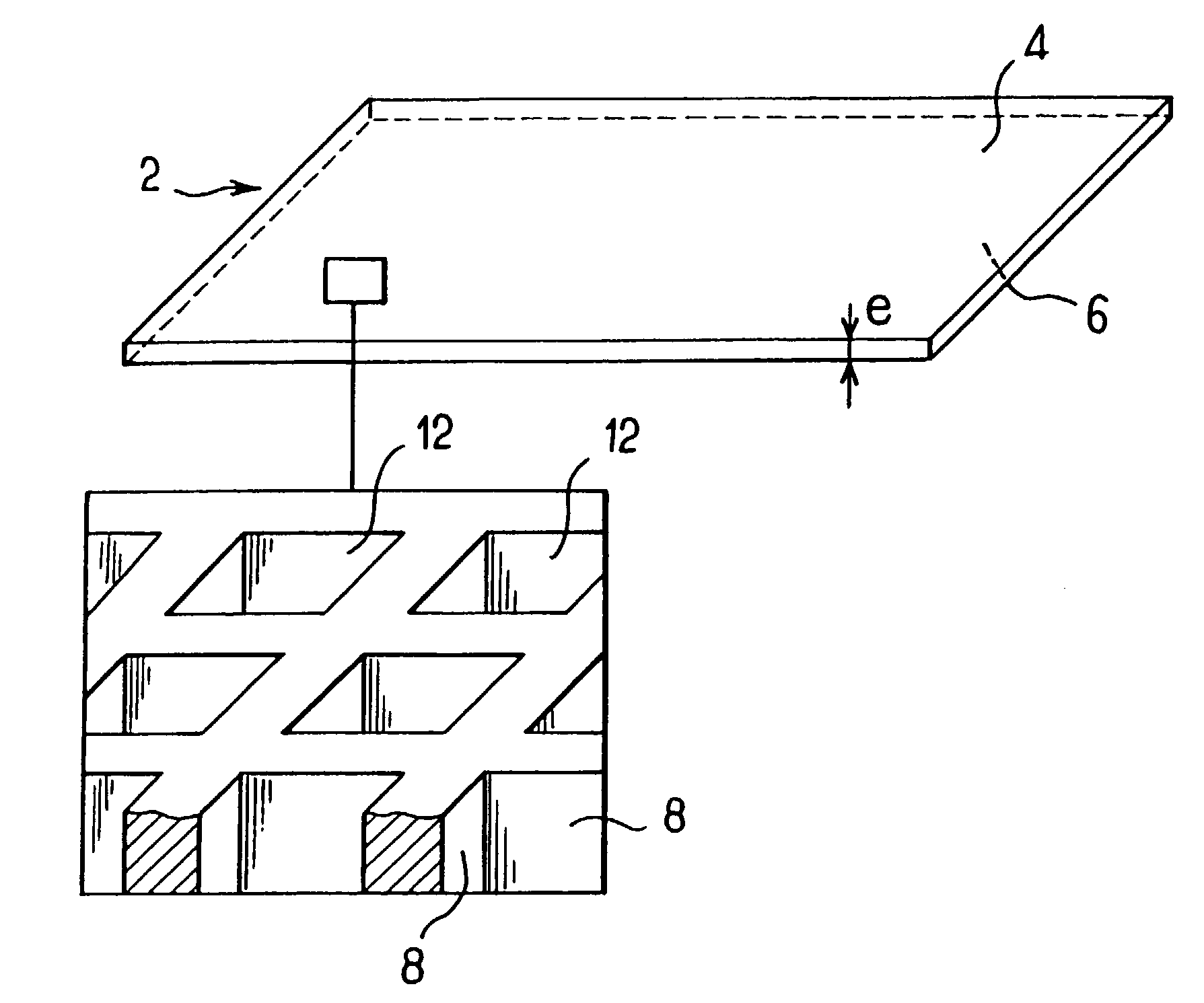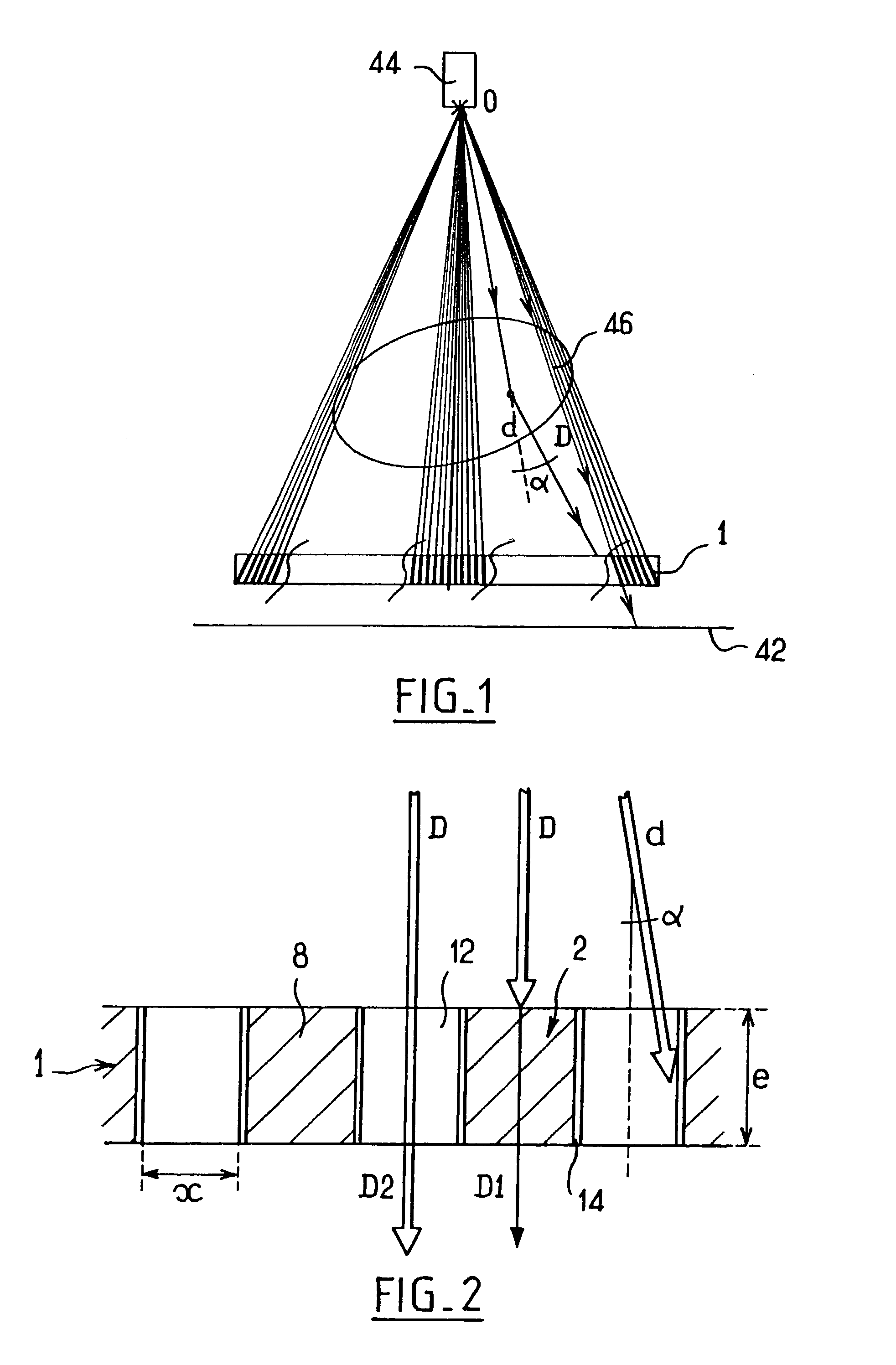Antiscattering grid and a method of manufacturing such a grid
a technology of anti-spread grids and grids, which is applied in the field of anti-spread grids, can solve the problems of significant material loss, grids are unable to reduce the degree of radiation scattered in a direction, and reduce the transmission of direct radiation through the grid
- Summary
- Abstract
- Description
- Claims
- Application Information
AI Technical Summary
Benefits of technology
Problems solved by technology
Method used
Image
Examples
Embodiment Construction
[0031]FIG. 1 shows schematically the principle of operation of an antiscattering grid 1 mounted in a radiology apparatus. The grid 1 is positioned in front of a detector screen 42 so that the radiation source 44 is located at the focal point O of the grid 1. One part of the direct radiation D emitted by the source 44 passes through an object 46, the image of which it is wished to obtain, without undergoing distortion. Another part d of the radiation is scattered by the object 46 so that it strikes the grid at an angle α to the focusing direction of the grid 1. Since the internal partitions of the grid 1 are focused, they absorb the scattered radiation d.
[0032]FIG. 2 shows more specifically the paths of the radiation, during image acquisition, through an antiscattering grid of an embodiment. The grid comprises a substrate 2 made of a polymer material, comprising partitions 8 which define cells 12. The internal walls of the cells 12 are covered with a metal layer 14. A part D1 of the ...
PUM
| Property | Measurement | Unit |
|---|---|---|
| thickness | aaaaa | aaaaa |
| thickness | aaaaa | aaaaa |
| thickness | aaaaa | aaaaa |
Abstract
Description
Claims
Application Information
 Login to View More
Login to View More - R&D
- Intellectual Property
- Life Sciences
- Materials
- Tech Scout
- Unparalleled Data Quality
- Higher Quality Content
- 60% Fewer Hallucinations
Browse by: Latest US Patents, China's latest patents, Technical Efficacy Thesaurus, Application Domain, Technology Topic, Popular Technical Reports.
© 2025 PatSnap. All rights reserved.Legal|Privacy policy|Modern Slavery Act Transparency Statement|Sitemap|About US| Contact US: help@patsnap.com



